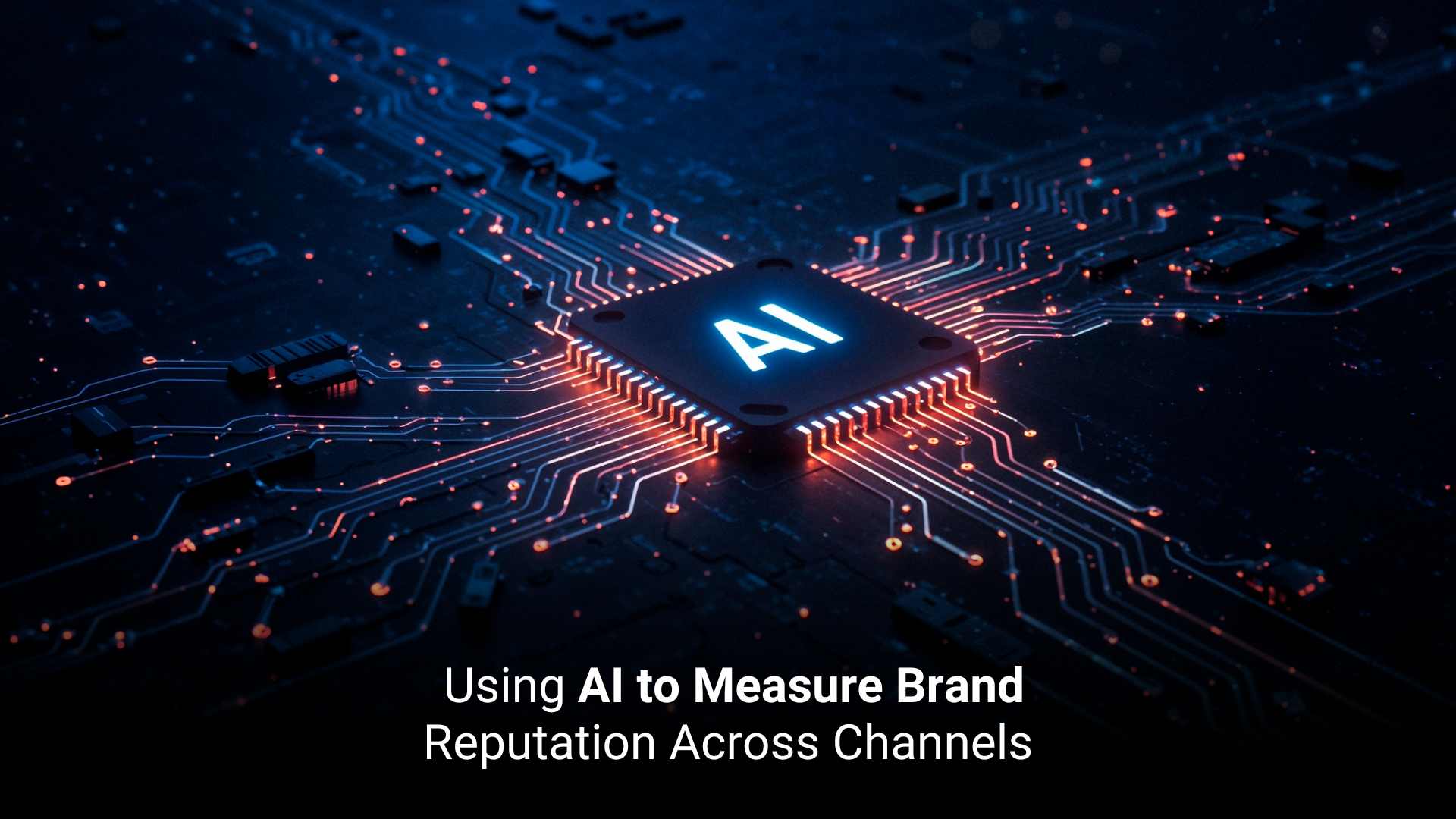
Using AI to Measure Brand Reputation Across Channels
A global brand introduces a new product line; immediately, social media gets abuzz with excitement and criticism. Meanwhile, the PR responds, news outlets pick up the story, reviews start flowing in, and influencer reactions go either way. Measuring a brand's reputation traditionally takes weeks across diverse channels. But today, AI is changing it.
Brand reputation is fluidly shaped across social platforms, media outlets, forums, and customer review sites. And with AI, you can track what people are saying, why they're saying it, and what that means for future perception. AI will be able to trace its source, assess the credibility of the voices driving it, and predict whether the issue is likely to fade or snowball.
This article explores how AI can help measure brand reputation.
How Cross-Channel Engagement Has Changed Brand Perception Tracking
Here's how cross-channel engagement has transformed brand perception tracking.
1. Unified Intelligence Across Platforms
With AI, brands can consolidate their sentiment and engagement data from multiple channels into one dashboard: leaders are no longer just seeing LinkedIn engagement or media mentions; they can see the full ecosystem.
Example: Through AI, a SaaS company can draw correlations between spikes in webinar engagement and positive brand sentiment on LinkedIn.
2. Brand Sentiment Analysis
Cross-channel AI tools keep track of conversations, noting tone and emotion across digital platforms. It helps in the early detection of possible risks.
Example: When a product update by a cybersecurity firm receives both positive coverage on tech blogs and critical discussions on Reddit, AI helps quantify which has more influence.
3. Predictive Analytics for Forecasting
AI measures current engagement trends that may shape the future of brand perception and stakeholder trust.
Example: A logistics service provider can anticipate dips in reputation, linked to delays in supply chains, by analyzing patterns in client feedback at customer portals.
4. Contextual Understanding of Sentiment
Organizations understand the drivers of perception by analyzing how customers, partners, and analysts discuss the brand in varied contexts.
Example: A cloud solution provider might find that while clients appreciate scalability (positive mentions on LinkedIn), analysts are more concerned with compliance gaps (neutral or negative mentions in reports).
Where AI Delivers the Most Value in Reputation Management
Here's where AI delivers most value in modern reputation management.
1. Sentiment and Context Analysis
AI is able to analyze data points from social media, news, forums, and review platforms. It identifies not just sentiment but also tone, context, and emotion behind mentions.
Example: The cybersecurity company identifies increased chatter on data breaches on Twitter or LinkedIn, prompting the comms team to act.
2. Risk Assessment
AI enables the anticipation of potential threats by mapping emerging narratives. Using predictive analytics, companies can determine which discussions are most likely to harm trust in their brands.
Example: A SaaS company uses AI to analyze online support forums and detect early warning signs that might indicate dissatisfaction before it escalates into a PR concern.
3. Cross-Channel Reputation
AI unifies feedback from earned media with employee reviews to provide a single source of truth on performance.
Example: A manufacturing brand can correlate investor sentiment on financial news outlets with employee engagement data from Glassdoor.
4. Impact From Influencer and Thought Leadership
AI can assess how industry analysts and influencers shape brand narratives. It quantifies influence and identifies what endorsements make the greatest difference in outcomes.
Example: A fintech company can gauge the impact of a thought leader's LinkedIn post on its brand sentiment across investor networks.
5. Automated Reporting
AI automates the reporting process, transforming data into visual insights that facilitate evidence-based decision-making.
Example: An enterprise can receive weekly AI-generated reports summarizing sentiment trends and risk forecasts.
How AI Bridges Gaps Between Qualitative and Quantitative Brand Insights
Here's how AI bridges the divide between qualitative and quantitative brand intelligence.
1. Turning Feedback into Metrics
Brands get customer reviews, analyst reports, and social media comments in huge numbers. AI converts this into sentiment scores using natural language processing or NLP.
Example: A cloud infrastructure provider can analyze comments on LinkedIn and support tickets to quantify how clients feel about service reliability. It provides valuable insights into strategy and operations.
2. Putting Data in Context
Whereas dashboards are able to show spikes in engagement, they rarely explain why these changes happen. AI bridges that gap by combining data analysis with contextual understanding.
Example: After a fintech company announces a new policy, there may be an increase in brand mentions. AI tools can help parse between those praising compliance improvements and those showing confusion.
3. Identifying Drivers and Hidden Risks
AI identifies which emotional triggers cause positive or negative sentiment. It links what customers say to business outcomes, like retention or deal velocity.
Example: A logistics company may find that customers value "responsiveness" more than "cost savings" through AI analysis of review data.
4. Human + Machine Collaboration
With automation handling data aggregation and analysis, you are left to interpret insights, find meaning, and make strategic decisions.
Example: AI dashboards can surface anomalies in sentiment data, while human analysts validate those findings, for a SaaS brand.
5. Integration of Predictive Analytics with Human Sentiment
AI predicts the future reputation trends by combining quantitative data on traffic, engagement, and conversions with qualitative indicators such as tone, sentiment, and influencer impact.
Example: A cybersecurity firm can combine rising customer satisfaction scores with feedback from analyst reports to predict stronger trust in its brand.
Conclusion
Brand reputation is not confined to a single platform or audience; it's built, tested, and reshaped across each digital touchpoint. When data meets brand strategy, the result aligns perception with purpose. The time has come to explore how AI can unify your reputation insights across every channel. Let's make your brand's reputation as smart as your technology.

artificial intelligence marketing
Join our newsletter!
Enter your email to receive our newsletter.




